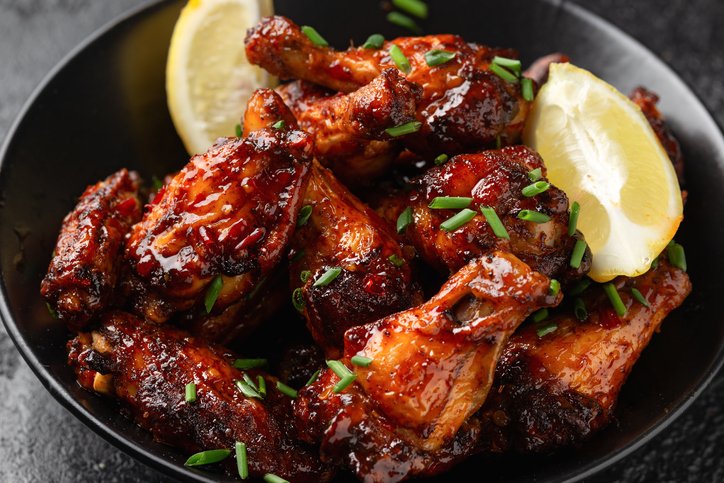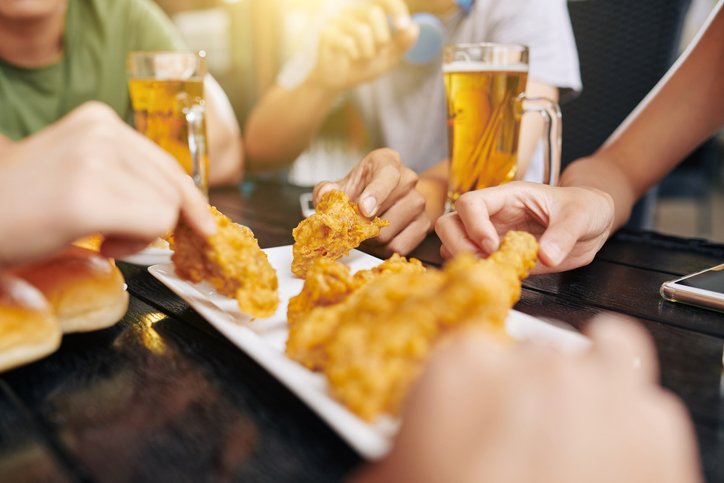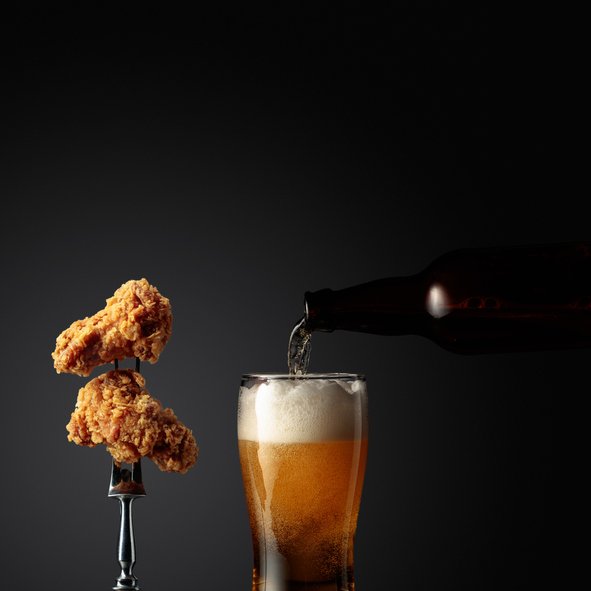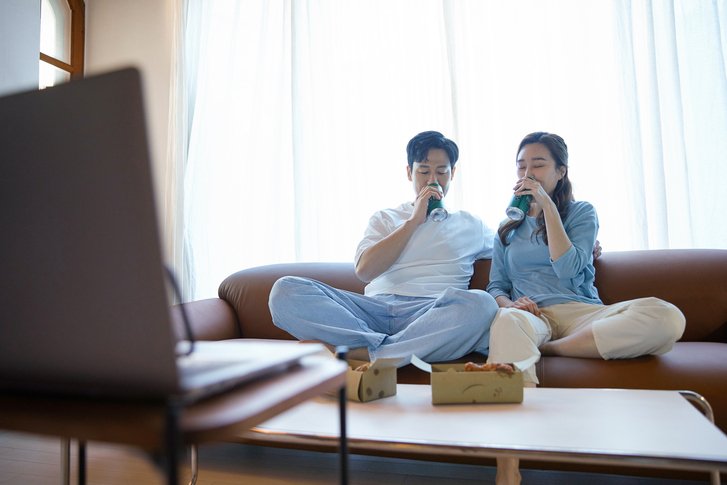If you haven’t heard of chimaek, prepare to have your taste buds tantalized. Chimaek is the delightful combination of Korean fried chicken and beer, a pairing that has taken South Korea by storm. With over 20,000 fried chicken eateries and a market worth $3 billion, it’s safe to say that chimaek has become a national pastime. From traditional to sweet and spicy, there is a vast array of chicken styles under the chimaek umbrella to satisfy any palate. So, forget about KFC and prepare to be blown away by the deliciousness that is chimaek.

Introduction to Chimaek
Chimaek, the combination of Korean fried chicken and beer, has become a beloved and integral part of South Korean culture. In this article, we will explore the origins of chimaek, its popularity in South Korean society, and the significance of chimaek as a national pastime.
The Origins of Chimaek
While neither fried chicken nor beer originated in Korea, the fusion of these two culinary delights has become a cultural phenomenon. The term “chimaek” became widely used in 2010, during the World Cup, and has since become a popular term to describe the combination of fried chicken (“chi”) and beer (“maekju”). The popularity of chimaek has grown significantly, and it now represents a sigh of relief and a way to celebrate surviving another day.
The Popularity of Chimaek in South Korean Culture
Chimaek is not only an industry but also a fundamental part of South Korean dining culture. South Korea boasts over 20,000 fried chicken eateries, and the market for fried chicken is worth approximately 3 trillion KRW (about $3 billion). Chimaek is a significant part of the national culture, and many people enjoy a satisfying chimaek meal after work or during leisure activities. Chimaek has evolved from being simply a national dish to a beloved pastime that brings people together.
The Significance of Chimaek as a National Pastime
Chimaek represents more than just a combination of fried chicken and beer; it is a symbol of relaxation, enjoyment, and camaraderie. South Koreans view chimaek as a way to unwind after a long day and celebrate life’s victories. Whether enjoyed at home, at a restaurant, or at a chimaek festival, this cultural phenomenon has become a cherished part of the nation’s identity.
Varieties of Chimaek
The world of chimaek offers a wide range of flavors, cooking methods, and techniques. In this section, we will explore the different styles of Korean fried chicken, traditional methods of cooking chicken, and the myriad flavor combinations that make chimaek unique.

Different Styles of Korean Fried Chicken
No single style can be considered the “authentic” chimaek. Instead, there is a multitude of styles that fall under the chimaek umbrella. Some popular styles include traditional fried chicken, spicy and sweet yangnyeom chicken, charcoal-fire cooked sutbul chicken, boneless sunsal chicken, and leek-smothered padak. Each style offers a different taste and texture, catering to a variety of preferences.
Traditional Methods of Cooking Chicken
Before fried chicken became popular in Korea, chicken was considered a delicacy reserved for special occasions. It was often stewed whole with dates and ginseng. However, with the introduction of vegetable oil product in 1971, fried chicken for the masses became more accessible. This marked the start of a booming chicken industry in South Korea. Traditional methods of cooking chicken, such as roasting and stewing, have since evolved into the various styles of fried chicken available today.
Flavor Combinations and Techniques
Chimaek is not just about the chicken; it’s about the perfect balance of flavors. From spicy and tangy sauces to savory seasonings, there are endless possibilities for flavor combinations. Many chimaek establishments pride themselves on their unique recipes and cooking techniques, constantly innovating to create new and exciting flavors. Whether you prefer a classic yangnyeom sauce or enjoy experimenting with different flavors, chimaek offers something for everyone.
The Evolution of Fried Chicken in Korea
In this section, we will delve into the history of fried chicken in South Korea, the introduction of chicken franchises, and the growth of the chicken industry during the financial crisis.

The History of Fried Chicken in South Korea
Fried chicken gained popularity in South Korea with the introduction of vegetable oil products in 1971. This marked the beginning of the mass production and consumption of fried chicken. However, it wasn’t until the late 1990s that fried chicken became a staple in the South Korean diet.
The Introduction of Chicken Franchises
The popularity of fried chicken in South Korea led to the introduction of various chicken franchises. These chains offered a consistent quality of chicken and quickly gained a loyal customer base. The growth of chicken franchises was further fueled by the financial crisis of the late 1990s, as many individuals turned to opening their own chicken joints after losing their jobs.
The Growth of the Chicken Industry during the Financial Crisis
The financial crisis of the late 1990s had a significant impact on the South Korean economy. However, the chicken industry was one of the few sectors that experienced growth during this difficult time. As individuals sought affordable dining options, fried chicken emerged as a popular choice. The success of the chicken industry during the crisis solidified fried chicken as a staple in South Korean cuisine.
The Beer Pairing
Chimaek is not complete without the perfect beer pairing. In this section, we will explore the tradition of pairing fried chicken with beer, why they make a perfect combination, and the rise of beer culture in South Korea.

The Tradition of Pairing Fried Chicken with Beer
The tradition of pairing fried chicken with beer has deep roots in South Korean drinking culture. The combination of crispy fried chicken and a refreshing beer is believed to enhance the overall dining experience. Many chimaek enthusiasts enjoy the contrast of flavors and textures, with the beer serving as a palate cleanser between bites of chicken.
Why Fried Chicken and Beer Make a Perfect Combination
The pairing of fried chicken and beer is a match made in culinary heaven. The crispy, savory chicken perfectly complements the crisp, refreshing taste of beer. The carbonation of the beer cuts through the richness of the chicken, creating a harmonious balance of flavors. This combination has become a favorite among South Koreans and has gained recognition globally.
The Rise of Beer Culture in South Korea
In recent years, South Korea has witnessed a surge in beer culture. Craft breweries and beer bars have sprung up across the country, offering a wide variety of beers for enthusiasts to enjoy. This newfound appreciation for beer has further elevated the chimaek experience, as people can now choose from a diverse selection of beers to pair with their fried chicken.
Chimaek Festivals and Events
Chimaek festivals and events have become an integral part of South Korean culture. In this section, we will explore the Daegu Chicken and Beer Festival, other festivals and events celebrating chimaek, and the impact of these events on tourism.
The Daegu Chicken and Beer Festival
The Daegu Chicken and Beer Festival is one of the most renowned chimaek festivals in South Korea. Held annually, this festival attracts thousands of visitors who come to indulge in the delicious combination of fried chicken and beer. The festival offers a wide range of chimaek vendors, live performances, and various activities that celebrate the joy of chimaek.
Other Festivals and Events Celebrating Chimaek
In addition to the Daegu Chicken and Beer Festival, there are numerous other festivals and events throughout South Korea that celebrate chimaek. These events showcase the diversity and creativity of the chimaek industry, providing a platform for vendors to showcase their unique flavors and cooking techniques. These festivals and events not only draw locals but also attract tourists from around the world.
The Impact of Chimaek Festivals on Tourism
Chimaek festivals and events have had a significant impact on tourism in South Korea. The combination of cultural experiences, delicious food, and vibrant atmosphere make these festivals a must-visit for both locals and tourists alike. Chimaek has become synonymous with South Korean cuisine, and these festivals showcase the best of what the chimaek industry has to offer. They contribute to the growth of tourism and promote South Korean culture on a global scale.
Chimaek in Popular Culture
Chimaek has made its mark in popular culture, featuring prominently in movies, television shows, and becoming the subject of celebrity endorsements and promotions. In this section, we will explore how chimaek is depicted in popular culture and its influence on Korean entertainment.
Chimaek in Movies and Television
Chimaek has become a recurring theme in Korean movies and television shows. It often symbolizes relaxation, celebration, and companionship. Whether it’s a group of friends enjoying a chimaek feast or a character treating themselves to some chimaek after a long day, these portrayals have further solidified chimaek as a beloved cultural icon.

Celebrity Endorsements and Promotions
Celebrities in South Korea are frequently seen endorsing and promoting various chimaek establishments. Their influence has played a significant role in the popularity and spread of chimaek. Social media platforms are often filled with posts and pictures of celebrities enjoying a chimaek meal, further fueling the public’s interest and curiosity.
The Influence of Chimaek on Korean Entertainment
Chimaek’s influence extends beyond individual endorsements and promotions. It has shaped the entertainment industry, with chimaek-themed events, merchandise, and even dedicated chimaek variety shows becoming popular. Chimaek has become a marketable concept that attracts both local and international audiences, showcasing the impact and widespread popularity of this cultural phenomenon.
Chimaek Industry and Dining Culture
In this section, we will explore the economic impact of the chimaek industry, the dining habits and preferences of Koreans, and the role of chimaek in socializing and leisure activities.
The Economic Impact of the Chimaek Industry
The chimaek industry has had a significant economic impact in South Korea. The market for fried chicken is worth about 3 trillion KRW (about $3 billion), according to Statistics Korea. The presence of thousands of chimaek establishments creates job opportunities and stimulates local economies. Furthermore, the success of the chimaek industry has led to the growth of related industries, such as beer production and distribution.
The Dining Habits and Preferences of Koreans
Koreans have a distinct dining culture that values communal dining experiences and the sharing of food. Chimaek fits perfectly into this culture, as it is often enjoyed in groups, with friends, family, or colleagues. Koreans value the social aspect of dining, and chimaek provides an opportunity for people to connect, relax, and enjoy each other’s company.
The Role of Chimaek in Socializing and Leisure Activities
Chimaek has become synonymous with socializing and leisure activities in South Korea. It is not uncommon to see groups of people gathering at chimaek establishments to celebrate birthdays, promotions, or simply enjoy a night out. Chimaek has evolved beyond being just a meal; it is an experience that brings people together and creates lasting memories. It has become an integral part of the social fabric of South Korean society.

The Future of Chimaek
In this section, we will discuss the trends and innovations in the chimaek industry, the potential for international recognition and expansion, and the potential challenges and opportunities that lie ahead for chimaek.
Trends and Innovations in the Chimaek Industry
The chimaek industry is constantly evolving to meet the changing demands and preferences of consumers. Innovative flavors, cooking techniques, and delivery options are emerging to cater to a diverse customer base. With the rise of health-conscious consumers, there is also a growing demand for healthier alternatives or vegetarian options.
International Recognition and Expansion
Chimaek has gained recognition globally, with many international food markets featuring Korean-style fried chicken and beer. As South Korean culture continues to gain popularity worldwide, chimaek has the potential to become a global culinary trend. Korean chains and franchises have already expanded to various countries, spreading the love for chimaek to new audiences.
The Potential Challenges and Opportunities for Chimaek
As the chimaek industry grows, there will be challenges to overcome. Competition among chimaek establishments will intensify, requiring businesses to constantly innovate and differentiate themselves. Additionally, the industry must navigate changing consumer preferences and trends, ensuring that chimaek remains relevant and appealing. However, with these challenges come opportunities for growth, expansion, and the continued celebration of chimaek as a cultural icon.
Conclusion
Chimaek, the combination of Korean fried chicken and beer, has captured the hearts and taste buds of South Koreans and the world. Its origins, popularity, and significance as a national pastime have made it an iconic part of South Korean culture. Whether enjoyed at festivals, restaurants, or in the comfort of your own home, chimaek represents more than just a meal; it is a celebration of life, togetherness, and the joy of good food and company. As the chimaek industry continues to grow and evolve, it will leave an indelible mark on both South Korean and global culinary landscapes. Cheers to chimaek!








